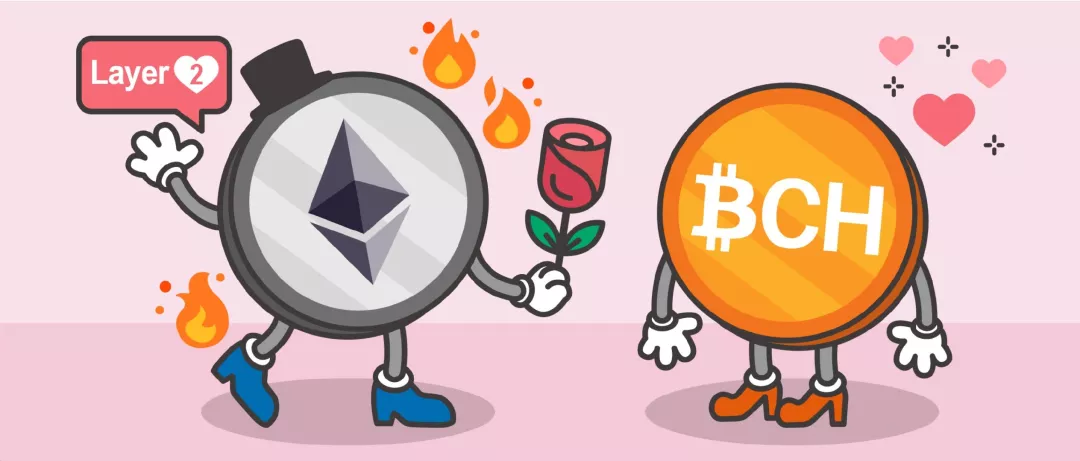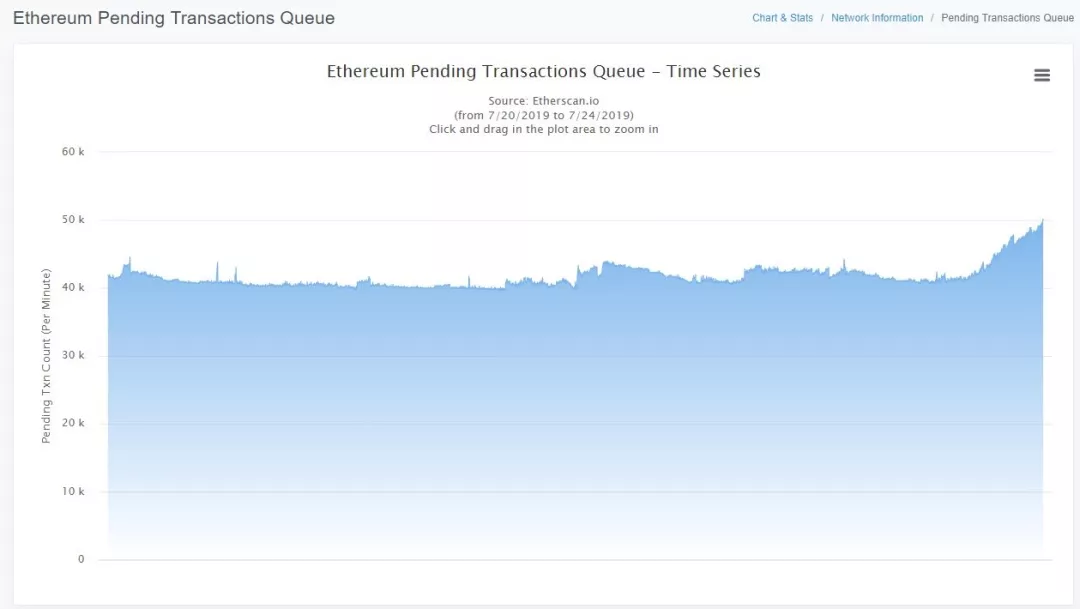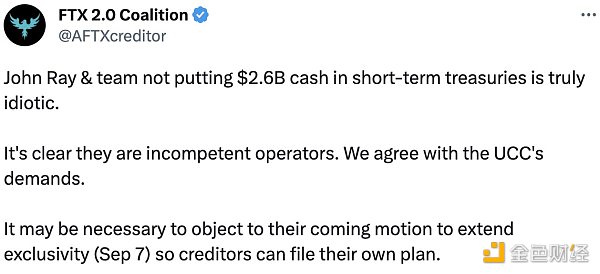V God intends to let Ethereum marry BCH and is planning to enhance privacy. Will ETH sidechains and anonymous coins tremble?
Original: Five fireball masters
"Teacher, I recently did two things with Ether. Have you heard about it?" "I heard that I want to temporarily marry BCH." Is it not? Then I want to start 'self-ignition'. Before ETH2.0 came out, it was really Do things…" I feel. “Did the teacher ever write something for Daxie too?” “No” “The teacher still writes a little bit” “Write!”
——–Dividing line——–
The dystocia of ETH 2.0 seems to have become a "consensus" in the circle, but it is actually a good thing to think about it. ETH as the "first public chain" in the circle, which is good, is the performance is too bad, so that so many public chains can be multiplied, how much high TPS is self-proclaimed, how special the new inventor consensus mechanism.
- Node business, how to make multiple EOS super nodes
- Market analysis: long-term confidence lost, BTC will soon bottom out again
- ErisX Chief Strategy Officer explains how cryptocurrency transactions benefit from algorithmic trading
If ETH 2.0 is really out, performance issues are resolved. How long do you think left the time window for these so-called "next generation public chains"?
Although difficult to produce, but can not be idle. This is not, in the near future, V God announced that it is necessary to "do things"!
One is to "temporarily marry" with BCH, let BCH act as the data layer of ETH before the arrival of ETH2.0; one is the relay registration burning mechanism for enhancing privacy and resisting junk transactions. So what do you mean by looking at these two things next?
Want to marry BCH: Dear, you come to be my data layer, ok?

The purpose of this post by V Shenfa is as follows:
1. Do you know how ETH implements extensions? It requires a non-scalable computing layer (that is, the layer that implements the smart contract, which implements functions such as sending Tokens), and an extensible data layer (for implementing transfers). , or the function of lettering on the popular ETH network some time ago).
2. If ETH 2.0 is implemented, of course, the time may be a bit long, and it can handle 10 MB / sec of data throughput by then.
3, but before the implementation of ETH 2.0, if you want to improve the data processing capabilities, you need to find an "intermediary" to do this data layer. ETH looked around and felt that BCH was good for the following reasons: large data processing (32 M data per ten minutes), cheap (BTC transfer is too expensive), and the mechanism for verifying BCH on ETH has been implemented.
The only fly in the ointment is that BCH has only one block in ten minutes. The time is a bit long, but it is said that BCH wants to achieve avalanche agreement to strengthen zero confirmation. If it can, it is better.
In fact, another one called ETC is not bad. The block time is 14 seconds, but the amount of data is only 8k per second. It is more complicated to verify the ETC than to verify the BCH, so the result is biased towards the BCH.
V God's post came out, a bunch of messages below, indicating that in addition to BCH, many of their own public chains can also take on this responsibility.
However, from the content posted by V God, there are two facts on the objective :
1. This is just a proposal and will not necessarily be implemented.
2. Even if executed, it will only last until the day when ETH 2.0 is “mature”. In addition, it may be possible to judge two facts, that is, V God is a little anxious about the current ETH expansion, and the current ETH Layer 2 expansion project, for various reasons, he does not look.
As we all know, the ETH network does have a performance bottleneck: in 2017, a crypto cat can block the whole network. In 2018, Fomo3D, which is almost never ending, is also because the network performance is hacked, using high-Gas mass. The transaction blocked the network and was successfully taken away by the hackers.
Recently, the reason why the ETH has recently exposed the performance problems is serious again . The actual TPS of the network in the past month is only about 7 or so. The unprocessed transaction volume has hit a new high for many times, and it has the feeling of burning the eyebrows.

Performance is not good, you have to expand, although Layer 2 has become a hot spot in the circle some time ago, the star project is getting together, but V God is directly hand-picked BCH.
Of course, there are also voices of opposition. For example, Tuur Demeester, founding partner of Adamant Capital, directly commented: "I am going, really fake, and don't use BCH. It uses an algorithm with BTC, so it is easy to attack 51%!" The meaning may be that if the bitcoin power is transferred, it is a minute to get BCH. He also posted a comparison of the attack cost map to show that the attack cost of BCH is much lower than that of ETH. Selecting BCH is equivalent to adding a "short board of wooden barrels" to ETH itself.
On the other hand, what may be more worrying is the many Layer 2 projects, which are some “alternatives” or “competitions” before the maturity of ETH 2.0 Plasma (after all, the state of Plasma and lightning networks). The channel Layer 2 technology implementation is different, so not the Plasma is out, all ETH Layer 2 projects will be zeroed.) However, the main advantage is that the time is sooner or later.
Nowadays, V God directly expresses that he wants to use a mature chain like BCH to expand the ETH data layer by means of “marriage”. Those Layer 2 projects, foreground geometry?
Relay registration burning: a key step in ETH privacy resolution

2019 is not only a year of cross-chain, but also an anonymous year. Monroe, Dashi and other forks are emerging, and Wright is preparing to add the MimbleWimble anonymity protocol. Now, even ETH is considering enhancing privacy.
The original meaning of V God is as follows:
- The purpose of the mechanism is to counter the junk trade in private applications in the chain;
- The implementation method is to establish a set of relay registration mechanism on the ETH second layer network, and each transaction needs to pay a certain proportion of fees in sending the broadcast;
- The user selects a relay to broadcast the message (transaction) and pays the fee, and the relay contract burns (destroys) a certain percentage of the fee and then transfers the remaining to the relayer;
- The relayer can not only accept ETH, but also accept the Token of ERC 20;
- Because of the existence of repeaters, the privacy of users has also been strengthened.
Many old irons are unclear about the definition and relationship of privacy, anonymity, and pseudonym. They always feel that the anonymous currency is cool and the dark network is cool, but have you thought about it? If the anonymous currency is really popular, for the blockchain Is overall development good or bad?
The widespread use of Bitcoin in the dark net, especially the Silk Road of the year, gave people the impression that “anonymous trading” is one of the important features of the blockchain . Various media also advertised the importance of privacy, saying that because the current Internet giant abuses our personal information, it invisibly infringes on our privacy rights, so anonymous currency is very important.
Is this really the case? May ask yourself a few questions.
- When you use WeChat and Alipay to go to Taobao or Tmall, do you really care about your consumption "not anonymous"?
- Don't you think that when people want to use "anonymous currency", they are often buying "bad" things other than law or morality?
If the blockchain has always been outside the law and regulation, and it is the mainstay of this anonymous transaction to help with money laundering or some black market trading, you can also confidently say that “blockchain is the technology that changes the world and human production relations” What?
Some time ago, the ETH chain was burned for a while. If one day, ETH was engraved with a lot of terrorism and even uploaded a lot of illegal information. Because of the decentralized nature, we can’t turn it off, we can’t delete it because Anonymity, we can't trace who uploaded these bad things, how should we deal with them?
Have you really thought about it?
The story about anonymity, pseudonym, and privacy has seen a very vivid metaphor before, and it is directly quoted here. We should respect privacy, but privacy is not the same as anonymity . In the traditional world, the world of blockchain is no different. (The following content sources and networks).
“A person took 5 yuan to buy a packet of rat poison from a small shop in a neighboring village. Afterwards, a case of death caused by rodenticide occurred in the village. The remnants of the scene proved that the drug came from this store.
1) Except for the store, no one knows that he bought the rat poison, which is privacy. 2) Although he did not know the store and did not inform the store of his real name and any pseudonym or pseudonym, when the police came to the door, the store remembered his appearance, accent, height, and the police visited many people, most of whom described The store describes the same characteristics and finally locks him into a suspect. This is a pseudonym. 3) When he bought the medicine, he covered his face, bowed his waist, wore gloves, avoided all the monitoring, and did not have any language communication with the store. When the police found the store, the store could not provide any useful information except when someone bought the medicine. Visiting everyone in the village and neighboring villages, the police still could not find any clues and became a pending case. This is anonymous.
Anonymity on Bitcoin refers to the third case. The system cuts off any contact associated with the payer's identity, no KYC, no anti-money laundering measures, and the system does not retain any data associated with the identity except for someone who paid the money . This kind of anonymity is blindfolded, bowed, not vocal, and avoids all the monitored drug purchasers. Will normal human society allow this currency?
Further, the anonymous system also makes the characteristics of Bitcoin untamperable disappear. When there is more evidence, it is also awkward to be unable to connect with people. Anonymous systems fundamentally undermine the characteristics of Bitcoin, and such Bitcoin is not likely to be used in normal society and in large-scale commercial applications. ”
——End——
『Declaration : This article is the author's independent point of view, does not represent the vernacular blockchain position, and does not constitute any investment advice or advice. 』
We will continue to update Blocking; if you have any questions or suggestions, please contact us!
Was this article helpful?
93 out of 132 found this helpful
Related articles
- Three men set a bitcoin scam to get a profit of more than 150,000 yuan was sentenced
- Can garbage trading mess up blockchains? They are eyeing XRP
- Fear of being dominated by the US Internal Revenue Service: Users with more than 10,000 cryptocurrencies will receive a tax "warning"
- The US Internal Revenue Service warns that bitcoin causes a fall in the price of 7/27
- Bitcoin is still expected to reach $42,000 by the end of the year? Hedge fund CEO also believes that it can reach $356,000 in 2021.
- BTC stabilized and rebounded back to 10,000 US dollars, the shock market is coming to an end
- Is Bitcoin rebounding? Novices must read the "signal" article!






